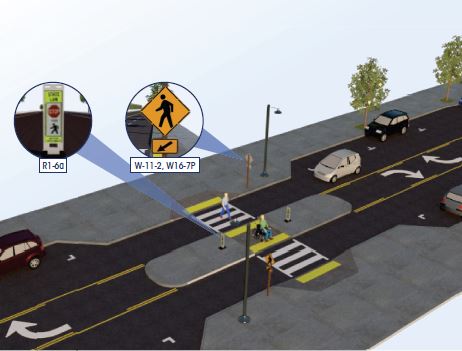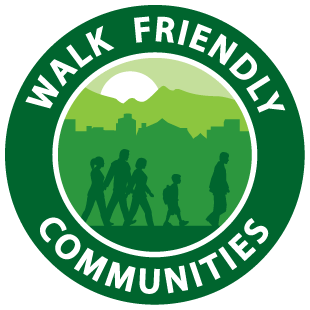Creating a safe, comfortable pedestrian network is key to encouraging walking. In every community, there are intersections and midblock locations without traffic control where pedestrians need to cross the street to reach a destination.

The Federal Highway Administration’s recently published Safe Transportation for Every Pedestrian (STEP) Guide to Improve Uncontrolled Crossings offers a set of cost effective safety countermeasures that communities can take to make crossing the street safer for people walking. Pedestrian crashes at uncontrolled crossings have been identified as a significant national safety problem. Applying the STEP countermeasures will improve safety while also enhancing livability and pedestrian accessibility.
The guide includes clear steps that agencies can take to select safety countermeasure for a given location that. This process can complement an established practice or stand on its own if a community hasn’t set methods previously. STEP materials include a ‘pocket version’ of the guide for use in the field and tech sheets that provide quick facts on each countermeasure. The guide also contains a ‘Framework for a Resolution Supporting Pedestrian Safety’, which will assist communities in ensuring that pedestrian safety prioritization is valued at the highest levels of town government.
Five countermeasures are covered in the STEP guide. Road diets allow space to be reallocated to uses that better accommodate pedestrians. Road diets have been shown to be cost effective, reduce total crashes, and mitigate speeding issues. Pedestrian hybrid beacons (PHBs) serve to warn and control traffic at unsignalized locations so that pedestrians may cross. Crosswalk visibility enhancements, which bring more attention to the existence of a crosswalk, can include improved crosswalk design, in-street pedestrian crossing signs, advance signs and markings, and curb extensions. These crosswalk visibility enhancements are often combined and integrated with other treatments covered in the guide. Pedestrian refuge islands allow a pedestrian a safe place to wait for a break in traffic while in the middle of the street. Raised crosswalks are more suitable for lower speed roads, and act as an extension of the sidewalk. Rectangular Rapid-Flashing Beacons (RRFBs) enhance the conspicuity of standard pedestrian and school crossing warning signs and alert drivers that someone is using the crosswalk.
The data show that pedestrian crashes at uncontrolled crossing locations are frequent, and often occur due to inadequate pedestrian crossing accommodations. This guide focuses on this common pedestrian safety problem and lays out clear steps communities can take to make improvements.
The STEP Guide to Improve Uncontrolled Crossings is available here. Further pedestrian safety countermeasures can be found at PEDSAFE.
